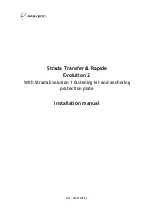
Chapter 1
A Map of the Canon EOS 6D
31
1
Looking through the viewfi nder during shooting allows you to verify whether camera
settings are as you want or if they need to be changed. In addition, you are alerted
when any exposure element you have chosen is beyond the exposure capability of the
light in the scene.
The 6D has interchangeable focusing screens inside the camera body. If you change
the focusing screen that’s installed in the camera, be sure to select the corresponding
custom function setting for the new focusing screen being used. Do this using Custom
function C.FnIII, menu 2 - Operation/Others, Focusing Screen. The options are
Standard Precision Matte, Precision Matte with Grid, and Super Precision Matte.
The Camera Menus
The 6D offers menus grouped as tabs in the categories of Shooting (
), Live View
shooting (
), Playback (
), Setup ( ), Custom Functions (
), and My Menu (
).
Just press the Menu button (
) to open the camera menus.
The menus and options change based on the shooting mode you select. In the Basic
Zone shooting modes — Scene Intelligent (
), Creative Auto (
), and Special Scene
(
SCN
) — the menus are abbreviated and you can make only limited changes to the
exposure and camera settings.
But in the semiautomatic and manual shooting modes that make up the Creative Zone
shooting modes — Program AE ( ), Shutter-priority AE (
), Aperture-priority AE (
),
Manual ( ), Bulb ( ), and the two Custom modes (
C1
) and (
C2
) — all the menus are
available.
Tables 1.1 through 1.17 show the camera menus and options that are displayed in
Program AE ( ), Shutter-priority AE (
), Aperture-priority AE (
), Manual ( ), Bulb
( ), and the two Custom modes (
C1
) and (
C2
).
05_9781118516706-ch01.indd 31
05_9781118516706-ch01.indd 31
5/14/13 2:09 PM
5/14/13 2:09 PM








































